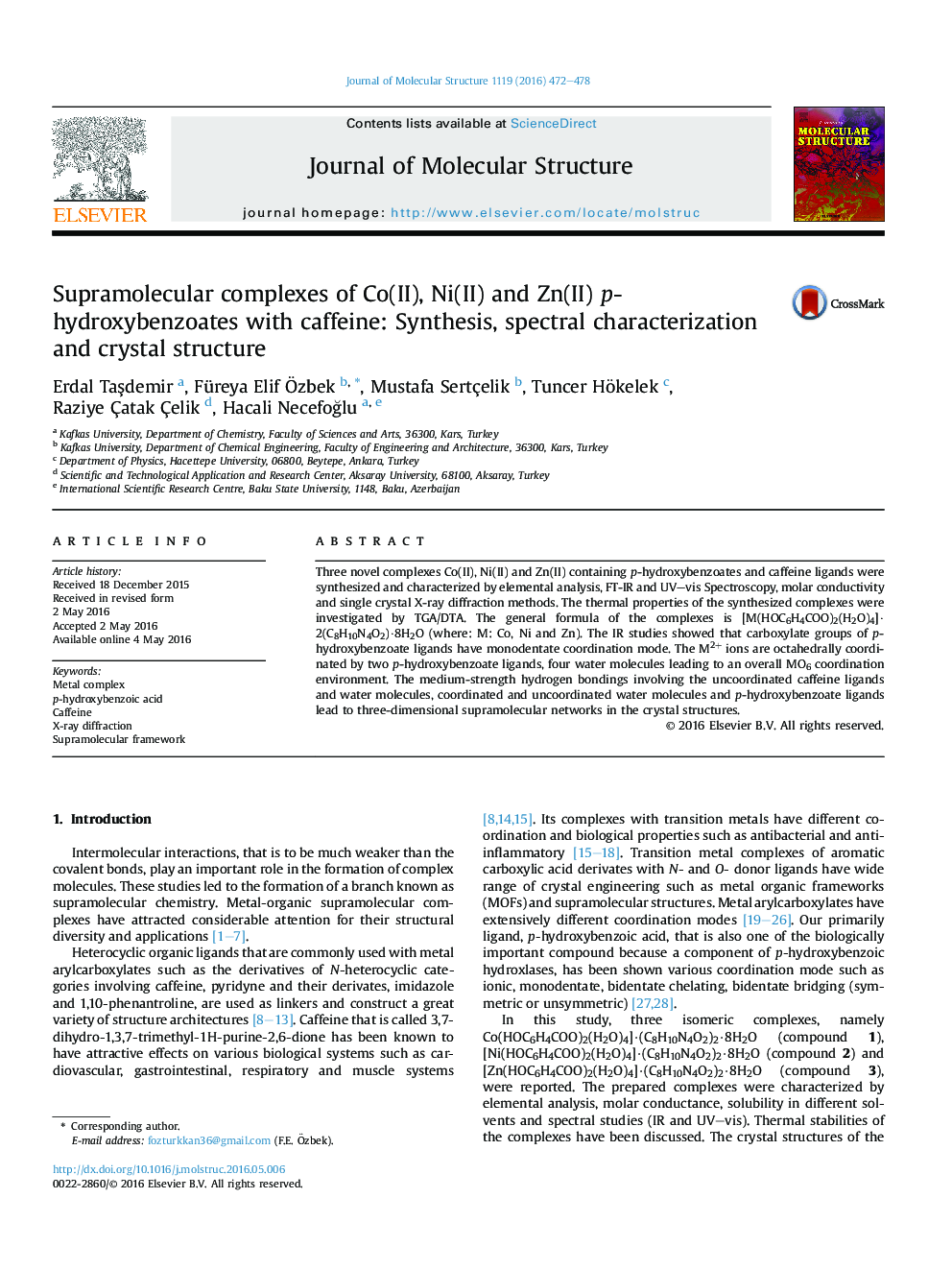| Article ID | Journal | Published Year | Pages | File Type |
|---|---|---|---|---|
| 1404817 | Journal of Molecular Structure | 2016 | 7 Pages |
•Co(II), Ni(II), Zn(II) complexes of p-hydroxybenzoate with caffeine were reported.•Isostructural complexes were characterized by different techniques.•Crystal structures have 3D supramolecular networks formed via hydrogen bondings.
Three novel complexes Co(II), Ni(II) and Zn(II) containing p-hydroxybenzoates and caffeine ligands were synthesized and characterized by elemental analysis, FT-IR and UV–vis Spectroscopy, molar conductivity and single crystal X-ray diffraction methods. The thermal properties of the synthesized complexes were investigated by TGA/DTA. The general formula of the complexes is [M(HOC6H4COO)2(H2O)4]·2(C8H10N4O2)·8H2O (where: M: Co, Ni and Zn). The IR studies showed that carboxylate groups of p-hydroxybenzoate ligands have monodentate coordination mode. The M2+ ions are octahedrally coordinated by two p-hydroxybenzoate ligands, four water molecules leading to an overall MO6 coordination environment. The medium-strength hydrogen bondings involving the uncoordinated caffeine ligands and water molecules, coordinated and uncoordinated water molecules and p-hydroxybenzoate ligands lead to three-dimensional supramolecular networks in the crystal structures.
